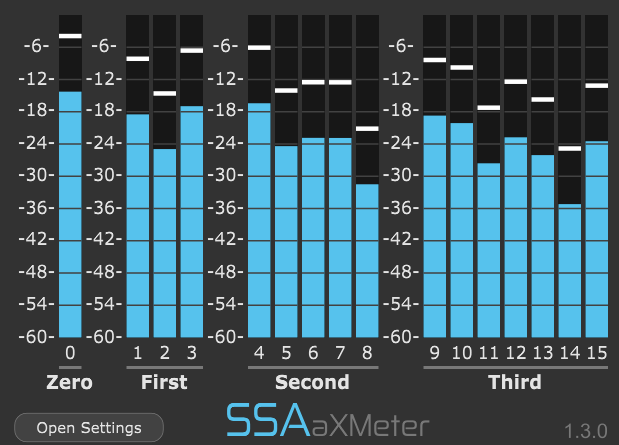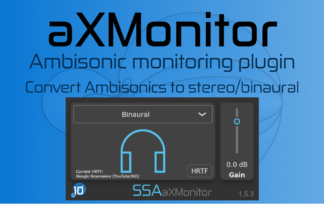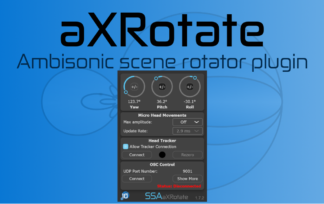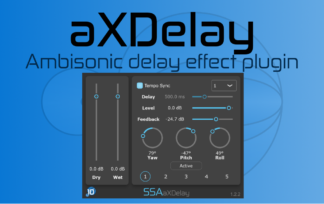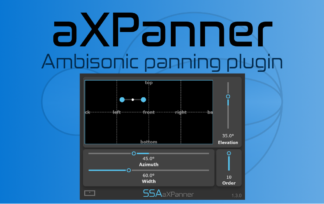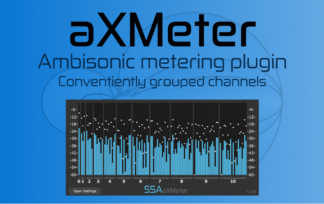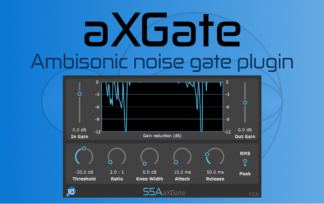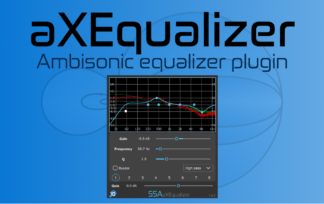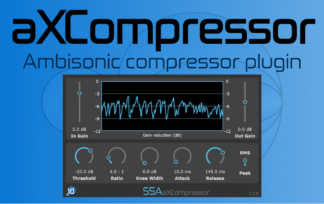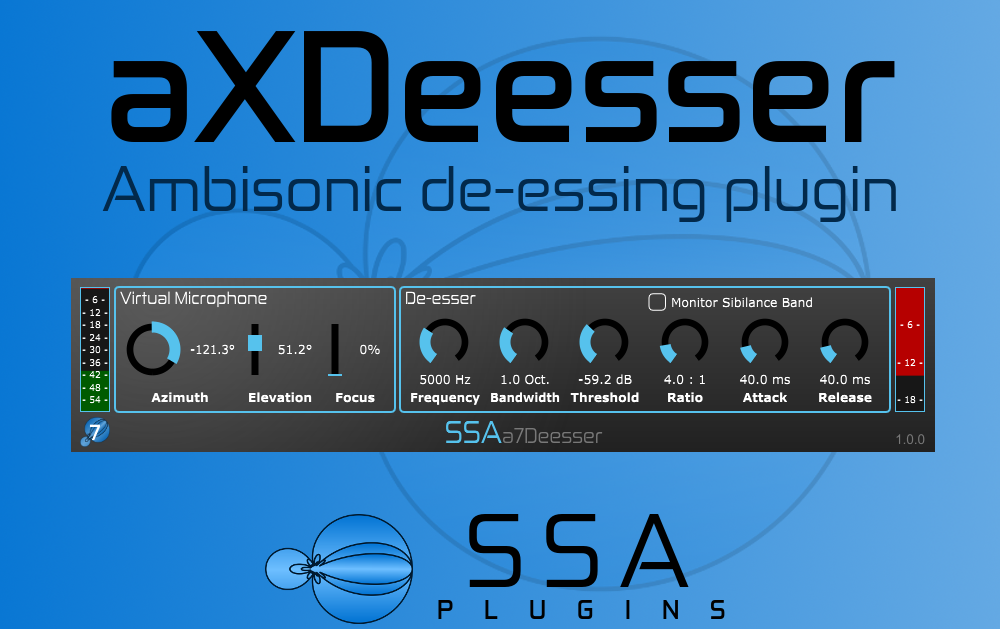
Today I am happy to announce a new plugin: aXDeesser. As the name suggests, it is a de-esser made specifically to be used on Ambisonic signals. It is available in VST3 format (Windows and Mac), AAX (Windows and Mac) for Pro Tools | Ultimate, and AudioUnit (Mac).
As with the other plugins in the aX range, the aXDeesser is available in first-order, third-order and seventh-order variations. You can pick the one that fits your needs. The introductory price is 50% of the standard price. It costs 10€ for first-order, 20€ for third-order and 40€ for seventh-order (excluding VAT/sales tax).
You can also get the aXDeesser in the aXBundles. If you have bought any of the bundles in the past then you can head over to the downloads section of your account to get it for free! Just download the latest bundle and you will find the aXDeesser with your other plugins.
Why an Ambisonic De-esser?
Processing Ambisonic signals has to be done carefully to avoid changing or destroying the spatial properties of the sound field, so you need a de-esser that is designed with this in mind.
The aXDeesser also takes advantage of the spatial information provided by Ambisonics to allow you to focus on specific regions of your sound field in order to trigger the de-esser processing, giving you even more control over your processing. Effectively, you use the virtual microphone as a side-chain signal to activate the de-essing processing on the full signal.
Who needs an Ambisonic de-esser?
You can use the aXDeesser on any Ambisonics stream, but it is most useful if you are processing signals recorded with Ambisonic microphones. Anyone working on complete mixes where access to mono-encoded sources are no longer available will also find it useful.
If you have a recording made with a first-order microphone, such as the TetraMic or Sennheiser AMBEO VR mic, then the a1Deesser will fit your needs. The a3Deesser will allow you to de-ess recordings from the OctoMic or Zylia microphone. The a7Deesser is overkill for recordings made with an Ambisonic microphone, but can be used on full mixed scenes or if used creatively.
So, if you have a recording made with an Ambisonic microphone then the aXDeesser is the perfect tool for de-essing. You can tame excessive sibilance, at the same time preserving spatial fidelity.
How does it work?
The plugin has two modules – a virtual microphone and the main de-esser module. The virtual microphone captures a signal that is used to feed the de-esser’s detection algorithm. When the microphone signals activates the de-esser, the processing is applied to the whole sound field.
You can control the direction of the virtual microphone, along with the focus. The focus essentially controls how directive the microphone is, with the maximum directivity depending on the Ambisonic order of the signal received by the plugin. The incoming signal order is shown in the bottom left of the plugin GUI. A focus of 0% gives an omnidirectional microphone response. Focus of 100% gives a cardioid response for a first-order signal and the beam narrows as the input order gets higher. The meter on the left of the GUI shows the level of the virtual microphone signal.
The de-esser has all of the usual controls you would expect to find. You can set the frequency, the bandwidth, level, compression ratio and attack and release times. The meter on the right of the GUI shows the gain reduction being applied to the sibilance band.
Interested?
Does all of that sound like something that could be useful to you? If so, head over to the shop by clicking below. By buying from this website you will be helping support independent development of spatial audio tools. Thanks for your support!
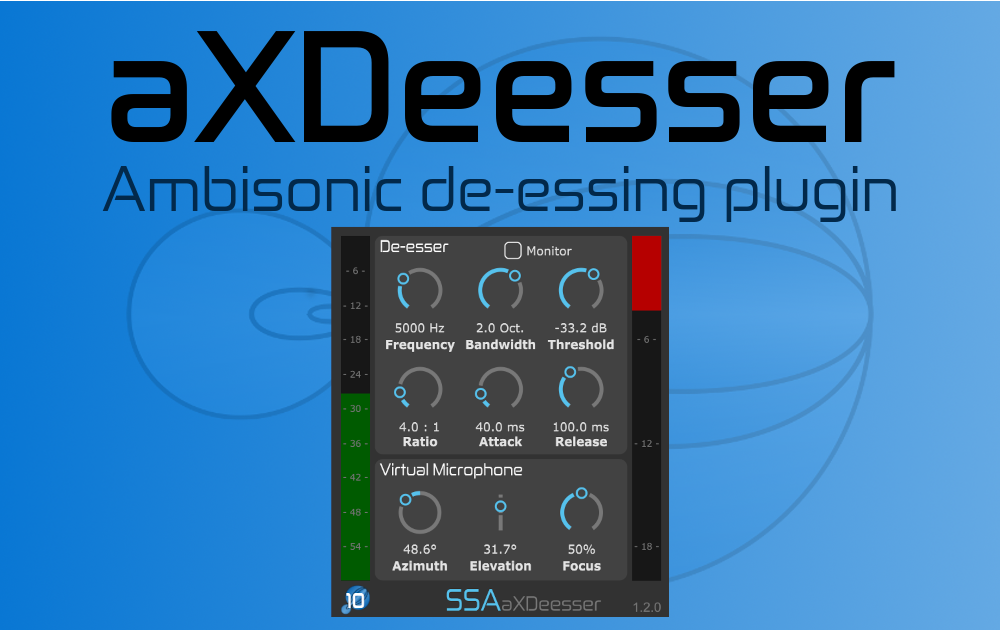
aXDeesser – Ambisonic De-Essing Plugin
The aXDeesser is a de-essing plugin that can be used on any AmbiX-format (SN3D/ACN) Ambisonic signal. It allows the signal within a particular band to be compressed and can be driven by the signal from a virtual microphone with user-defined direction.

